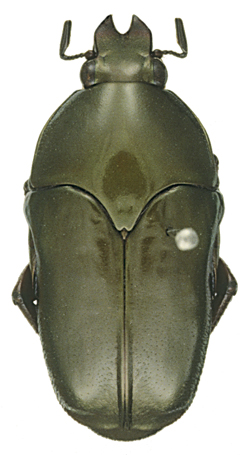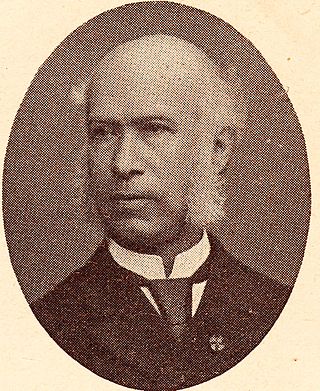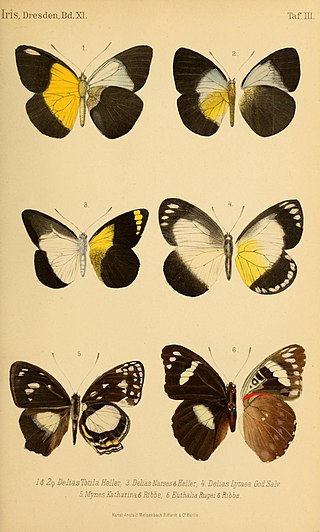
A Leyden jar is an electrical component that stores a high-voltage electric charge between electrical conductors on the inside and outside of a glass jar. It typically consists of a glass jar with metal foil cemented to the inside and the outside surfaces, and a metal terminal projecting vertically through the jar lid to make contact with the inner foil. It was the original form of the capacitor.

Leiden is a city and municipality in the province of South Holland, Netherlands. The municipality of Leiden has a population of 127,046, but the city forms one densely connected agglomeration with its suburbs Oegstgeest, Leiderdorp, Voorschoten and Zoeterwoude with 215,602 inhabitants. The Netherlands Central Bureau of Statistics (CBS) further includes Katwijk in the agglomeration which makes the total population of the Leiden urban agglomeration 282,207 and in the larger Leiden urban area also Teylingen, Noordwijk, and Noordwijkerhout are included with in total 365,913 inhabitants. Leiden is located on the Oude Rijn, at a distance of some 20 km (12 mi) from The Hague to its south and some 40 km (25 mi) from Amsterdam to its north. The recreational area of the Kaag Lakes (Kagerplassen) lies just to the northeast of Leiden.

Lucas van Leyden, also named either Lucas Hugensz or Lucas Jacobsz, was a Dutch painter and printmaker in engraving and woodcut. Lucas van Leyden was among the first Dutch exponents of genre painting and was a very accomplished engraver.

The Silver Fleet is a 1943 British World War II film written and directed by Vernon Sewell and Gordon Wellesley and produced by Powell and Pressburger under the banner of "The Archers".

Pieter van Musschenbroek was a Dutch scientist. He was a professor in Duisburg, Utrecht, and Leiden, where he held positions in mathematics, philosophy, medicine, and astronomy. He is credited with the invention of the first capacitor in 1746: the Leyden jar. He performed pioneering work on the buckling of compressed struts. Musschenbroek was also one of the first scientists (1729) to provide detailed descriptions of testing machines for tension, compression, and flexure testing. An early example of a problem in dynamic plasticity was described in the 1739 paper.

Flower chafers are a group of scarab beetles comprising the subfamily Cetoniinae. Many species are diurnal and visit flowers for pollen and nectar, or to browse on the petals. Some species also feed on fruit. The group is also called fruit and flower chafers, flower beetles and flower scarabs. There are around 4,000 species, many of them still undescribed.
Jacob Rudolph Hendrik Neervoort van de Poll was a Dutch entomologist who specialised in Coleoptera. He was the vice-president of Artis, the Amsterdam zoo; a member of the Netherlands Entomological Society and the Société entomologique de France. The butterfly Troides vandepolli was named, by Samuel Constantinus Snellen van Vollenhoven, curator of the Leiden Museum, in his honour.

Trimeresurus hageni, commonly known as the Hagen's pit viper, is a species of pit viper, a venomous snake, in the subfamily Crotalinae of the family Viperidae. The species is endemic to Southeast Asia. There are no subspecies that are recognized as being valid.

Aertgen Claesz. van Leyden, also known as Allaert or Aert van Leyden or Aert Claesz. van Leyden, was a 16th-Century Dutch painter, draughtsman and designer of stained glass. Works by this artist can be found at the Rijksmuseum in Amsterdam, Stedelijk Museum De Lakenhal in Leiden, the Metropolitan Museum of Art in New York and Museo Thyssen-Bornemisza in Madrid.

Constantijn L'Empereur was a prominent Dutch Hebraist, a distinguished Orientalist and doctor of theology.

Fredericus Anna Jentink was a Dutch zoologist.

Ischiopsopha are beetles from the subfamily Cetoniinae, tribe Schizorhinini. The genus was created by Raffaello Gestro in 1874. The type species of the genus is Cetonia bifasciata Quoy & Gaimard, 1824. These cetoniids have only the tip of the scutellum visible. The genus is widespread throughout the whole Australian region.

The Leyden papyrus X is a papyrus codex written in Greek at about the end of the 3rd century A.D. or perhaps around 250 A.D. and buried with its owner, and today preserved at Leiden University in the Netherlands.
The year 1561 in science and technology included a number of events, some of which are listed here.

Johan Wilhelm van Lansberge was a Dutch diplomat and entomologist.

Mattheus Marinus Schepman was a Dutch malacologist. He was one of the foremost collectors of mollusc shells in the Netherlands, and was also high on the overall list of European collectors.
Canna Maria Louise Popta was a Dutch biologist.

Euthaliopsis is a monotypic genus erected by Jacob R. H. Neervoort van de Poll in 1896. The single contained species is Euthaliopsis aetion which feeds on Calophyllum as a larva.

Ablaberoides is a genus of beetles within the family Melolonthidae.

Dischista is a genus of beetles in the family Cetoniidae. It was first described in 1842.















